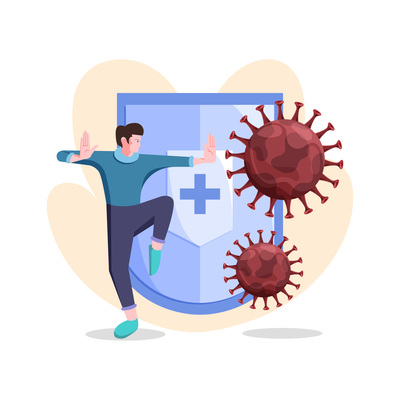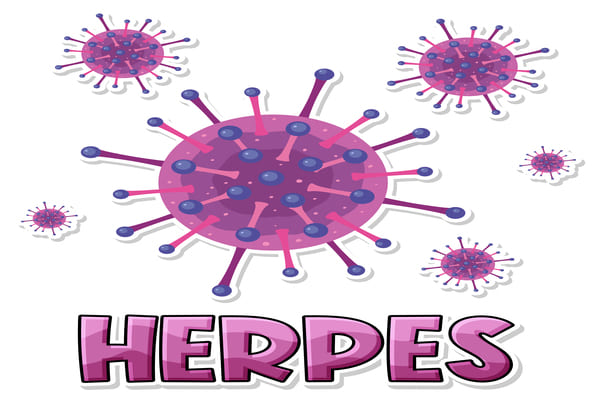Can Oral HSV-1 Spread Someone with Genital HSV-2?
Can oral HSV-1 Spread someone with genital HSV-2?
When you Google “how many types of HSV are there”, the answer is usually 2, HSV-1 and HSV-2 or oral herpes and genital herpes. But on herpes dating sites like MPWH, users are divided into 4 types: oral HSV-1, oral HSV-2, genital HSV-1, genital HSV-2. This seems to indicate that both HSV-1 and HSV-2 may exist on the face or genitals and around them. Some people also raised the question: What if my boyfriend and I have different herpes types? For example: Can oral HSV-1 Spread someone with genital HSV-2?
This article provides detailed content to compare the differences between HSV-1 and HSV-2 in the areas of incidence, main symptoms, and transmission methods, the possibility of cross-infection between the two, and preventive measures. And you will get comprehensive answers as you read.
Basic overview of HSV-1 and HSV-2
HSV-1 and HSV-2 are twins from the same virus family, and they are distinguished by the virus type; oral herpes and genital herpes are distinguished by the infection area of HSV. Some people simply equate HSV-1 with oral herpes and HSV-2 with genital herpes, which is actually not rigorous.
HSV-1 (Herpes Simplex Virus Type 1):
Main infection areas: mouth and lips
Main symptoms: The most typical manifestation is blisters or ulcers in the mouth or lips, which are usually accompanied by pain, burning and itching. In the period of the first outbreak, the symptoms may be more severe and accompanied by systemic symptoms such as fever, sore throat, headache, muscle aches and swollen lymph nodes.
Mode of transmission: Direct contact with the affected individual’s mouth, saliva or infected parts (such as herpes on face or in the mouth) is the most common. For example, kissing, sharing tableware or toothbrushes, mouth-to-mouth contact, etc.
HSV-2 (Herpes Simplex Virus Type 2) :
Main areas of infection: genital and anal areas
Main symptoms: Symptoms may include painful blisters or sores in the genital or anal area, fever, body aches, and swollen lymph nodes.
Mode of transmission: The most common way HSV-2 is transmitted is through direct contact with the genital or anal area of people with herpes. Even when there are no visible symptoms, HSV-2 can be shed from the skin, especially in the genital area, and passed to sexual partners. HSV-2 can be passed from mother to baby during childbirth, especially if the mother has her first outbreak during childbirth. This is called neonatal herpes and can be very serious. However, if the mother has an outbreak before childbirth, neonatal herpes is less likely to occur.
How HSV-1 and HSV-2 spread
HSV-1:
Oral infection: It can be transmitted through kissing or contact with the saliva of individuals living with herpes. Oral transmission rate is highest when the virus is active (such as when mouth sores or blisters are present). But even when there are no obvious symptoms, the virus can be spread to others through asymptomatic transmission (i.e., the virus is shed from the skin).
HSV-2:
Genital infection: The virus enters the body through tiny breaks in the skin when it comes into contact with the skin of people with herpes in the genital, anal, or oral areas. Similar to HSV-1, HSV-2 can also be spread through asymptomatic transmission, which allows the virus to be transmitted to sexual partners without any obvious symptoms.
In summary, HSV-1 and HSV-2 are the two main herpes viruses, and although each usually infects different parts of the body, they can all reside in each other’s domains. In fact, HSV-1 or HSV-2 can also cause herpes on face such as corneal herpes, eczema herpeticum, nasal herpes, and even herpes encephalitis (a serious, potentially life-threatening infection. Patients may experience neurological symptoms such as headache, fever, confusion, and seizures).
Cross-infection between HSV-1 and HSV-2
Cross-infection occurs when one type of herpes virus (such as HSV-1) spreads to an atypical part of the body (such as the genital area) through a specific contact route, or another type of herpes virus (such as HSV-2) infects the oral area through a different contact route. This cross-infection is not uncommon in real life, especially when sexual intercourse or oral-genital contact is frequent. HSV-1 has even become the leading cause of first-episodes of genital herpes in many countries.
Oral HSV-1 transmission to the genital area
HSV-1 can be transmitted from the mouth of those with herpes to the genital area of their sexual partner through oral sex. Especially when there are active herpes on face, oral hsv-1 transmission rate is very high. Touching the genitals after touching the oral area without washing hands should be avoided as much as possible.
Genital HSV-2 transmission to the oral area
Although this transmission method is rare, if the sexual partner is experiencing the challenge of genital HSV-2, the virus may be transmitted to the oral area through oral sex, causing oral herpes. HSV-2 is less active in the oral area, but it is not completely impossible.

Immune system response
In the early stages of cross-infection, symptoms may be mild or unnoticeable because the immune system is already familiar with certain HSV characteristics. However, if the immune response in an individual is weak (e.g., immunocompromised individuals), cross-infection may still cause symptoms that are more severe than a single virus.
Whether it is HSV-1 or HSV-2, once the virus enters the latent stage, it hides in the ganglia and the immune system cannot completely eliminate them. The virus can reactivate under certain conditions (such as colds, anxiety, menstruation, sun exposure, abrasions, HIV infection, hormone drugs, etc.), causing relapses. Each time a relapse occurs, the immune system will be activated again to try to control the virus, but due to the virus’s strong latent ability, it is still impossible to completely eliminate it.
Nevertheless, as the immune system continues to adapt, the frequency and severity of HSV relapses usually decrease gradually. With each relapse, the immune system is able to respond faster and more effectively.
How to prevent oral HSV-1 spread to genital HSV-2
Wash your hands frequently: Wash your hands thoroughly with soap and water, especially after touching the affected area or making physical contact.
Avoid sharing personal items: Do not share toothbrushes, razors, etc. with others.
Avoid contact with sores or lesions: Try to avoid touching your own or other people’s herpes areas. If you must touch them, be sure to wash your hands immediately after contact.
Precautions during sexual contact: During the period of HSV symptoms, sexual contact, including oral sex and genital contact, should be avoided to prevent cross-infection.
Use condoms: Condoms can reduce the risk of genital HSV transmission, but they cannot completely eliminate the risk, especially in uncovered areas.
Use masks or oral dams: During oral sex, using masks or oral dams (dental dams) can reduce the risk of HSV-1 transmission from the mouth to the genitals.
Antiviral drugs: Under the guidance of a doctor, the use of antiviral drugs (such as acyclovir, valacyclovir or famciclovir) can reduce the active period of the virus and thus reduce the risk of transmission.
Strengthen the immune system: Maintaining a healthy diet, adequate sleep and regular exercise can help strengthen the immune system and reduce the recurrence rate of HSV.
Reduce stress: Stress may induce HSV recurrence. Learning stress management techniques, such as meditation or relaxation training, can indirectly reduce the risk of cross-infection.
Summary
Both HSV-1 and HSV-2 can be present in the oral and genital areas, so the answer to “Can Oral HSV-1 Spread to Someone with Genital HSV-2?” is yes. And the likelihood of their occurrence can be effectively reduced by understanding how they are transmitted and preventive measures.
However, if the couple is monogamous, both parties are living with the same type of herpes (called seroconcordant couples), and neither party has other sexually transmitted infections (STI), there is no need to use barrier methods such as condoms or oral dams during sexual intercourse. This explains why many individuals with herpes opt for partners who share the same herpes type, which not only eliminates anxiety about not knowing how to protect themselves or their partners, but also reduces the worry about not knowing how to tell someone that they have herpes. In this context, many herpes dating apps have emerged.
But it should be noted that friction can aggravate herpes and slow healing, so regardless of whether there is cross infection, it is not recommended to have sex during an outbreak.


